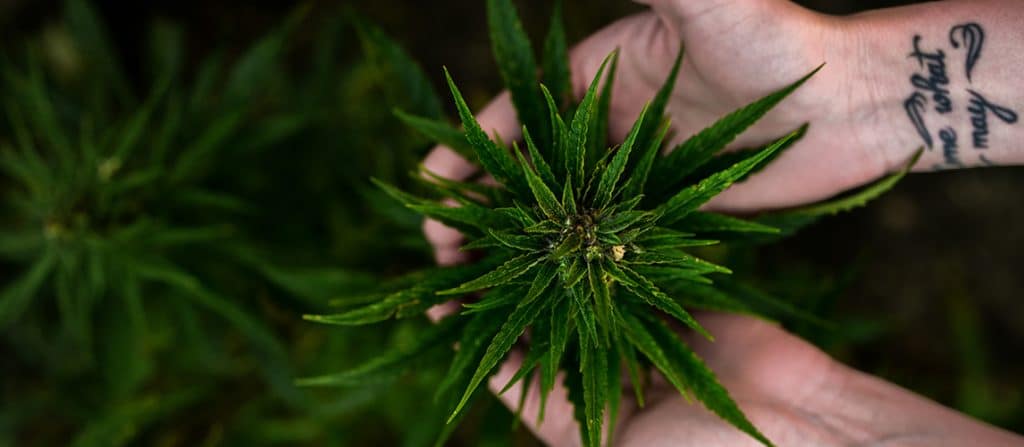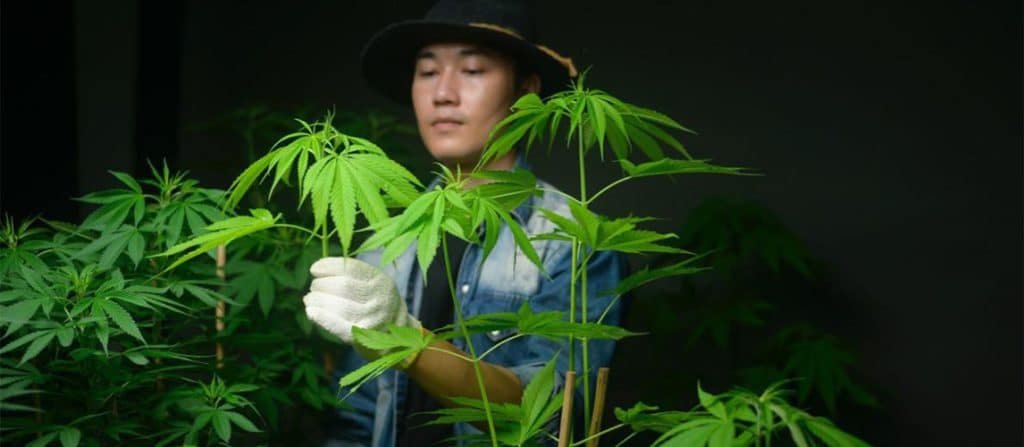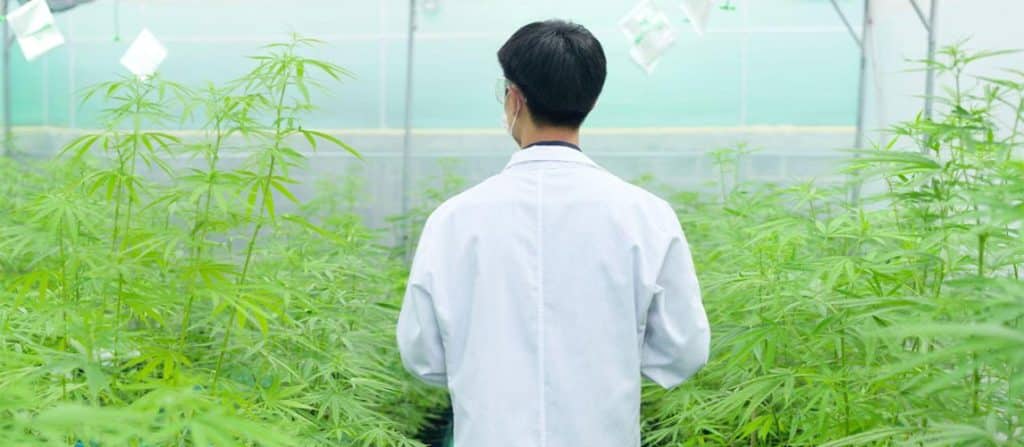Industrial hemp as a versatile plant

Industrial hemp, also known by its scientific name Cannabis sativa, has become one of the most discussed plants in recent years, mainly due to its enormous potential in various areas, particularly in health. In this article, we will guide you through the history of industrial hemp, its differences from marijuana, its uses, cultivation and processing methods, as well as the legal framework and the health benefits this plant offers.
History
To give you a closer look at industrial hemp and all its benefits, let’s first take a step back in time and explore the history of this plant. The history of industrial hemp stretches far back into the past. The plant was used worldwide across various cultures and civilizations. Archaeological findings indicate that hemp was cultivated in ancient China as early as 6000 to 4000 BCE. Historically, industrial hemp was used to produce textiles, paper, oils, medicines, and other products. Naturally, hemp was a staple in households, enabling people to make clothing or prepare porridge. Although hemp was widely used for many years, its cultivation gradually declined with the advent of modern times. This decline was partly due to various laws restricting its growth because of its psychoactive effects. However, it is important to note that industrial hemp is not the same as marijuana.
The Difference Between Hemp and Marijuana
When people hear “hemp” or just “cannabis,” many immediately associate it with marijuana and judge it negatively. But that’s not accurate. Hemp is not the same as marijuana, and it’s important to highlight their key differences.
Even though hemp and marijuana belong to the same Cannabis genus, they have very different effects. Perhaps the most important difference is the THC content, which is a psychoactive compound. Marijuana and its effects are well-known, characterized by a high THC content that produces euphoria and psychoactive effects when consumed. On the other hand, hemp, also known as industrial hemp, contains only minimal amounts of THC (usually well below 0.3%), which does not produce any intoxicating effects.
The uses of industrial hemp and marijuana differ significantly. Industrial hemp is used in the textile, food, cosmetic, and healthcare industries. In contrast, marijuana and its cultivation in Slovakia remain illegal, as it is considered a narcotic substance. However, even the cultivation of industrial hemp in Slovakia is regulated by law.
The legal status of industrial hemp depends on its THC content. The cultivation of industrial hemp is legal or regulated in many countries, whereas marijuana often remains illegal, although some regions have legalized or decriminalized it. In Slovakia, the cultivation of industrial hemp with a THC content of less than 0.3% is permitted.
From a health perspective, industrial hemp has become popular for its numerous health benefits. Hemp oil contains essential fatty acids and vitamins, making it suitable for nutrition and cosmetics. CBD oils are very beneficial for health, and if you are interested in how to choose a CBD oil, you can read more in our article How to Choose CBD Oil or Drops. While marijuana does have its place in medicine, its use is associated with psychoactive effects.
Cannabis Sativa (industrial hemp) = technical hemp
Cannabis sativa, also known as industrial hemp, represents one of the most important varieties of the Cannabis genus. Its properties, structure, and uses distinguish it from Indian hemp, which is primarily known for its high content of the psychoactive compound THC. In the case of Cannabis sativa, the key factor is the minimal THC content, usually less than 0.3%, making it an ideal plant for industrial use. Industrial hemp is a dioecious plant, meaning it has separate male and female plants. The difference between them can be observed in their appearance: males can grow up to 5 meters tall and are slimmer and taller than females. Females are shorter and are characterized by thicker stems.
From industrial hemp, we can obtain a wide range of products, as it provides hemp fiber, oil, and seeds. Hemp seeds are highly nutritious, rich in proteins, essential fatty acids, and minerals. Hemp seed oil is known for its high content of omega-3 and omega-6 fatty acids, which contribute to the healthy functioning of the body and have anti-inflammatory effects. The fibers are very strong and durable, making them useful in the textile industry—for example, in the production of fabrics, canvas, and other materials.
No pesticides or herbicides are required for cultivation, as industrial hemp is naturally resistant to weeds and therefore does not need any chemical treatments.

Indian hemp (Cannabis indica)
Indian hemp (Cannabis indica), also known as hashish hemp, is one of the two main cannabis species. It differs from Cannabis sativa through its distinctive characteristics: it has shorter stems, broader leaves, and a more robust growth habit. Cannabis indica is primarily known for its high content of the psychoactive compound THC, which produces euphoric and relaxing effects. Cultivation of Cannabis indica is mainly for smoking marijuana and producing hashish.
Cultivation of industrial hemp
The cultivation of industrial hemp requires specific conditions, but this resilient plant can be successfully grown in various soils and climates. The most optimal environment for growing industrial hemp is warm weather and fertile soil. In our region, hemp can be cultivated anywhere with fertile ground. Cannabis sativa is very sensitive to frost. Young plants can tolerate light frost, but they still prefer warmer conditions.

In the early stages, cultivating Cannabis sativa requires a lot of regular watering. Only after some time does the plant become capable of withstanding temporary dry periods. Soil is very important for growing industrial hemp. The most suitable soils are fertile, deep, and easy to work with, specifically loamy-sandy soils with a low groundwater level. During cultivation, it is necessary to fertilize the soil regularly and effectively, and also to add humus. Quality fertilization and sufficient humus addition are crucial. For Cannabis sativa, the ideal soil has a neutral to slightly alkaline pH.
Processing of industrial hemp
Processing of industrial hemp involves a complex procedure that enables efficient use of different parts of the plant to produce a wide range of useful products. This comprehensive process begins with the selection and cultivation of suitable hemp varieties under optimal conditions.
After the industrial hemp matures, it undergoes a precise harvesting process, during which the plants are carefully separated into stalks, seeds, and leaves. The harvested stalks are then processed to extract valuable hemp fiber, which is used in the textile industry to produce durable materials.
The seeds of industrial hemp are rich in oil and are processed to obtain hemp oil, which is an excellent source of omega-3 and omega-6 fatty acids. This oil is used in the food and cosmetics industries, contributing to health and beauty. Industrial hemp seeds are also suitable for sale.
Uses of industrial hemp
Hemp (Cannabis sativa) is known for its versatile uses across various industries. Its fibers are used in the textile industry to produce durable fabrics. Hemp seeds are a rich source of nutrients and are used in the food industry to produce oils and other products. In construction, hemp fibers are utilized to create eco-friendly insulation and building materials. Hemp seed oil is also used in biodiesel and biofuels, contributing to more sustainable energy solutions. Hemp oil and extracts are frequently incorporated into cosmetics for their nourishing effects on skin and hair. Additionally, industrial hemp is used to produce dietary supplements such as CBD oil, CBG oil, balms, and similar products.
Legalization of Industrial Hemp in Slovakia and Cultivation Restrictions
Currently, the situation in Slovakia is such that the cultivation of industrial hemp is allowed on plots with an approved type of crop. However, strict limits on THC content must be observed, which must not exceed 0.3 percent.
The cultivation of Cannabis sativa in Slovakia is under strict control and regulation according to the applicable legislation. Act No. 139/1998 explicitly prohibits growing hemp in most areas of the country, with the sole exception for industrial purposes, provided that a permit is granted by the Ministry of Health of the Slovak Republic.
This legislation emphasizes restricting the cultivation of Cannabis sativa in Slovakia in order to control and regulate its use. According to the mentioned law, cultivating industrial hemp in Slovakia is only permitted if it complies with regulations and is approved by the relevant authorities.
Hemp (Cannabis sativa) also finds its place in the cosmetic industry due to its unique properties. Hemp oil and extracts are frequently used in cosmetic products such as creams, oils, soaps, and more.
Hemp (Cannabis sativa) also holds a place in the cosmetic industry thanks to its unique properties. Hemp oil and extracts are very often used in cosmetic products such as creams, oils, soaps, and more.
Hemp seed oil from industrial hemp is rich in essential fatty acids, vitamins, and antioxidants, providing excellent hydration for the skin. Its light texture allows for quick absorption without a greasy feeling.
Hemp (Cannabis sativa) also contains compounds with anti-inflammatory properties, making it a suitable remedy for various skin issues. With regular use of hemp-based cosmetics, the skin can feel hydrated, soft, and rejuvenated. It is particularly beneficial for eczema, dermatitis, psoriasis, irritations, and other skin conditions.

Hemp (Cannabis sativa), effects and health benefits
Hemp is a rich source of various compounds. Thanks to this, it is known for its positive effects on human health.
An exceptional benefit of hemp is its omega-3 and omega-6 fatty acids. These fatty acids have a positive impact on the cardiovascular system and support healthy brain and nervous system function.
Hemp seeds themselves contain high amounts of protein, fiber, and vitamins, such as vitamins E and B. These nutrients are important for muscle growth, digestion, and overall body function.
Industrial hemp is also known for its anti-inflammatory properties. Consuming hemp products in the diet or as dietary supplements can help reduce inflammatory processes in the body, which is crucial for the prevention of many diseases, including chronic conditions.
Additionally, hemp contains compounds known as cannabinoids, which have a positive effect on the endocannabinoid system in the human body. This system is responsible for maintaining balance and homeostasis in the body, thereby supporting overall health.
Products from industrial hemp
- Hemp oil – used in the kitchen or as a dietary supplement for its beneficial effects on health.
- Hemp seeds – consumed on their own or added to yogurt, salads, or smoothies.
- Hemp flour – suitable for baking and making pastries. It contains all the nutritional benefits of hemp seeds.
- Hemp fiber – used in the textile industry to produce durable and eco-friendly fabrics. It also has potential in construction as a component of sustainable insulation.
- Cosmetic products – Hemp oil and extracts are often added to cosmetic products, including creams, soaps, and shampoos, for their moisturizing and regenerating effects on skin and hair.
- Food products – These include hemp proteins, energy bars, hemp oils with various flavors, and more.
- Hemp tea – It has relaxing properties and is often consumed for its beneficial effects on the nervous system. It contains antioxidants and can contribute to overall well-being.
- Cartridges and joints – Industrial hemp is also used for smoking in the form of joints or for vaporization.

